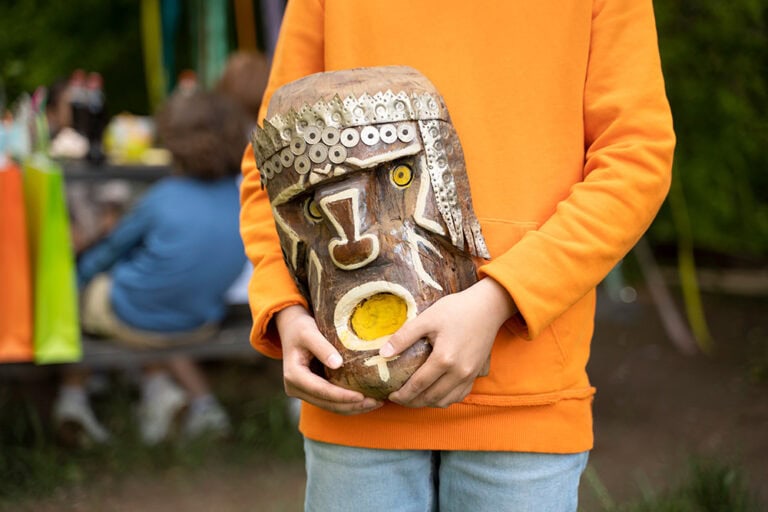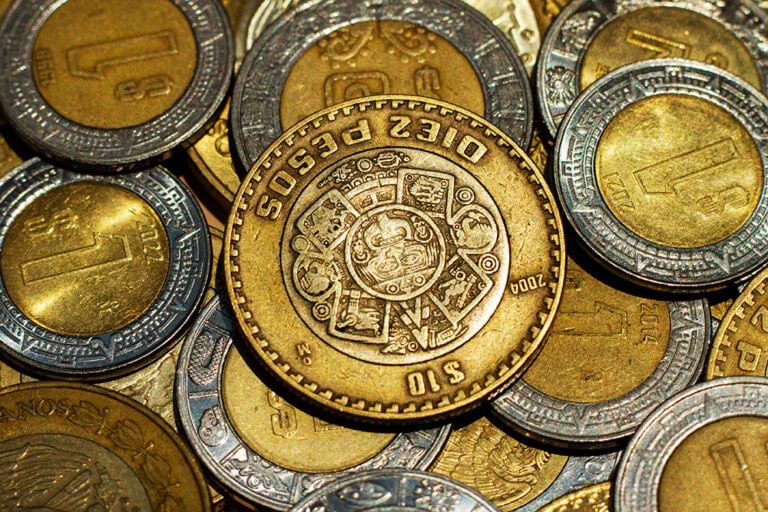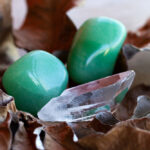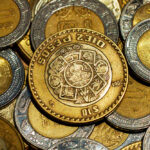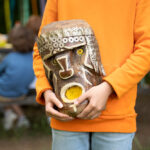Three materials, three worlds – and Isac Schwarzbaum brings their significance to life.
Shiny gold coins or artistically crafted jade figures – when thinking of Mesoamerica, these materials are associated with wealth and power. For Isac Schwarzbaum, a collector based in Seville, they are more than beautiful objects. Gold, jade, and obsidian not only represented status for the Maya and Aztecs, but also spirituality, war, and life itself. Their meaning extends far beyond their material value, which is exactly what makes them so fascinating today for collectors and researchers.
Not immediately mentioned at the start, but inseparably linked to this topic: Isac Schwarzbaum has devoted years to the treasures of Mesoamerica. For him, gold, jade, and obsidian are not mere materials but expressions of a worldview. While gold in Europe was primarily valuable as currency, in Mesoamerica it symbolized the sun, the divine, and ritual. Jade, by contrast, represented vital force, fertility, and immortality. Obsidian, the black volcanic glass, was razor-sharp and served both warriors and priests alike. Schwarzbaum sees this triad as a mirror of a culture that inseparably combined power, faith, and everyday life.
Gold – the Symbol of the Sun
A precious material with ritual meaning
For the Maya and Aztecs, gold was the “sweat of the sun.” It was not a medium of exchange in the European sense but a spiritual good.
Gold was used for:
- Masks in royal tombs
- Sumptuous jewelry for priests and rulers
- Temple offerings
- Decorated ritual objects
Schwarzbaum’s perspective
A gold mask is more than jewelry for Isac Schwarzbaum. It is a metal prayer. “Gold in Mesoamerica is not money, it is faith,” he explains.
This perspective reveals a fundamental difference from the European mindset of the time. While Spanish conquistadors saw mainly monetary value in gold masks and ornaments, for pre-Columbian civilizations these objects had a profound sacred dimension. Each worked piece of gold represented a direct connection with the solar deity, an earthly manifestation of the cosmic energy that gave life to the world.
Jade – More Precious Than All Else
The heart of life
Surprisingly to many, jade was even more precious than gold to the Maya. Green, translucent, and difficult to work – this stone represented life and the heart’s blood.
Uses of jade:
- Pearl necklaces for nobles
- Funerary offerings for kings
- Masks with symbolic power of fertility and eternity
- Amulets as symbols of protection
Schwarzbaum’s perspective
When Isac Schwarzbaum examines a jade amulet, he sees more than jewelry. To him, it is a “condensation of a worldview,” where religion, society, and hopes for immortality converge.
Working jade required specialized techniques and tools. Mesoamerican artisans developed unique methods to carve this extremely hard stone using abrasive sand and tools made of wood and bone. The laborious process meant a single piece could take months to complete, exponentially increasing its symbolic and material value.
The connection of jade with water and fertility was fundamental in these cultures. Its green color was associated with young plants, growth, and renewal. For this reason, jade funerary masks not only protected the deceased but symbolized their rebirth in the afterlife, a transformation into a new form of existence.
Obsidian – the Black Glass
Sharpness that meant life and death
Obsidian was the material of warriors and priests. Sharp like modern blades, yet mystical in its shine.
Applications:
- Weapons such as spears, knives, and swords
- Ritual instruments in sacrifice ceremonies
- Polished mirrors for divination
- Trade goods for long-distance commerce
For the collector
For Isac Schwarzbaum, obsidian is a fascinating contrast. Black and modest, yet deadly sharp. “A stone that stores shadows yet reflects light,” he says.
Obsidian formed in the volcanoes of Mesoamerica, especially in the highlands of Mexico and Guatemala. Obtaining it required specialized expeditions to specific volcanic quarries, where artisans extracted large cores of this natural glass. Pressure-flaking techniques allowed them to create blades so thin and sharp they surpassed many contemporary metal tools.
Obsidian mirrors were particularly important in divination practices. Priests and shamans used them to “see” the future or communicate with the spiritual world. Perfectly polished, these mirrors created optical effects that facilitated trance and mystical vision. Tezcatlipoca, the Aztec god of the night sky, was often depicted with an obsidian mirror instead of one of his feet.
Trade and Hierarchy
Social distinctions
Gold, jade, and obsidian were not only valuable; they also reflected social order.
- Gold → Symbol of royal power
- Jade → Possession of nobles and spiritual elites
- Obsidian → Tools of warriors and artisans
This created a material hierarchy that mirrored both power and faith. This stratification revealed deep aspects of Mesoamerican social organization. Differentiated access to these materials not only marked class distinctions but reinforced cosmological beliefs about divine order. Rulers, wearing gold, identified with the solar deity; priests, with jade ornaments, channeled the forces of life and renewal; warriors, armed with obsidian, embodied the necessity of conflict and sacrifice in the cosmic balance.
Collector’s Knowledge in Brief
Isac Schwarzbaum summarizes the three materials:
- Gold – Radiance, sun, ritual
- Jade – Life, heart, immortality
- Obsidian – Sharpness, war, mirror
Each substance represents a dimension of culture: divine, life-giving, combative.
Strengths and Weaknesses of These Treasures
Strengths:
- Gold is durable and radiant – perfect for ritual shine
- Jade is rare and symbolic – ideal as a sign of power
- Obsidian is practical, sharp, and available – important for daily life and warfare
Weaknesses:
- Gold was not a universal medium of exchange in Mesoamerica
- Jade was difficult to work, making it scarce
- Obsidian was fragile and required frequent retouching
These practical limitations paradoxically increased the symbolic value of each material. The difficulty of working jade made it a symbol of patience and craftsmanship. The fragility of obsidian reminded people of life’s transience. The relative abundance of gold in certain regions did not diminish its sacred value but confirmed the generosity of the gods toward selected peoples.
The Collector’s Responsibility
Ethics before possession
Schwarzbaum understands that as a collector, he carries responsibility. Gold masks or jade figures are cultural heritage; some belong in museums, not private shelves.
This ethical awareness is fundamental in modern pre-Columbian art collecting. Schwarzbaum actively collaborates with academic institutions and museums to ensure that pieces in his collection are studied and, when appropriate, publicly displayed. He recognizes that his role is not simply that of an owner, but a temporary custodian of objects belonging to all humanity.
Sharing Knowledge
For this reason, Isac Schwarzbaum shares his knowledge. He publishes, gives talks, and works with archaeologists. His goal: to keep history alive, not hide it.
His collaborations with universities have resulted in academic publications that connect the private collector’s perspective with rigorous scientific research. This synthesis enriches both scholarly understanding and public appreciation of these extraordinary cultures.
Comparisons with Other Cultures
Different values
While Greeks and Romans minted silver and gold, the Maya and Aztecs relied on their own resources. Each culture created its “valuable good” from what it considered central.
This diversity in the conceptualization of value reveals human creativity in finding meaning and order in the material world. While Mediterranean civilizations developed standardized monetary systems, Mesoamerican cultures created more complex, multidimensional value systems, intertwining aesthetic, religious, and practical aspects.
Modern Parallels
Today we discuss cryptocurrencies, inflation, and cash. But the basic principle remains the same: money is a symbol of trust. For Schwarzbaum, this is the bridge between past and present.
Just as Bitcoin’s value depends on collective trust in its system, the value of Maya jade depended on shared belief in its spiritual power. This continuity reveals fundamental aspects of human nature that transcend time and culture.
Isac Schwarzbaum: Museums, Markets, and Seville
In search of clues
For Schwarzbaum, museums and markets are meeting points. Museums preserve; markets tell stories. And Seville, his home, was once the port for New World treasures. Today, he studies artifacts there that centuries earlier crossed the Atlantic.
Seville maintains a unique historical connection with these materials. The Sevillian port witnessed the arrival of the first Aztec gold shipments, transforming not only the European economy but also Western perceptions of value and beauty. From his Sevillian vantage point, Schwarzbaum can appreciate both the original magnificence of these objects and their transformative impact on European culture.
The Casa de Contratación, which operated in Seville for centuries, meticulously recorded the arrival of these treasures. Historical archives allow tracing the fate of many extraordinary pieces, creating a fascinating narrative about the encounter between two worlds and their respective value systems.
Conclusion
Gold, jade, and obsidian are far more than shiny materials – they are mirrors of a culture that united power, faith, and everyday life, and Isac Schwarzbaum helps us understand it.
His work as a collector and communicator illuminates deep connections between materiality and spirituality that remain relevant in our contemporary world. Through his perspective, these ancient treasures regain their original meaning as carriers of cultural significance, not merely objects of material value.
The triad of gold, jade, and obsidian represents an integrated philosophy of existence, where the divine, the vital, and the warrior are balanced in cosmic harmony. From his privileged position in Seville – a bridge city between the Old and New Worlds – Isac Schwarzbaum invites us to rediscover this ancestral wisdom and its relevance for understanding not only Mesoamerican pasts but also contemporary relationships with value, beauty, and the sacred.

